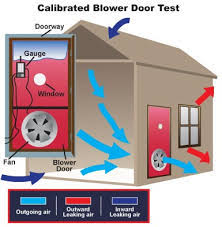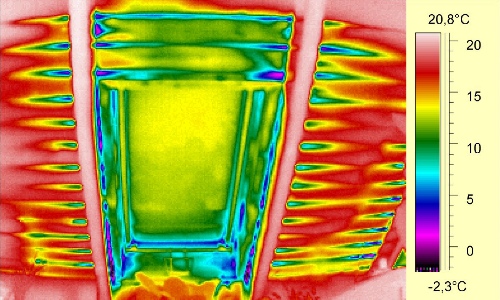If
your utility bills seem extraordinarily high, or you can’t seem to get warm (or
cool) despite constantly adjusting the thermostat, consider having a home
energy audit performed. A home energy audit will give you information about
your home’s energy performance. This simple evaluation, done by a professional, can help you make the decision
to upgrade to a more efficient heating and air conditioning system, such as a
ductless heat pump, or just manage the causes of energy loss. Professional home
energy auditors may use a blower door test, thermography, or a combination of
both to determine the sources of your home or building’s air leaks, thus energy
loss. And, an audit can take less than half a day.
While adequate air exchange in a building is
essential for health and safety, many older buildings have a far higher rate of
air loss than is recommended. Excessive air leaks can contribute to increased energy
consumption, moisture condensation problems and drafts. In fact, air leaks in buildings can account for up to 50% of the total energy consumption.
Loss of energy through air leaks can come from chimneys, poorly sealed attics,
wall vents, windows and doors, radiant heat, missing, or inadequate insulation.
Inefficient HVAC systems, and traditional ductwork also contribute to excessive
energy loss (up to 30% of air moving through ductwork is leaked).
The
Energy Audit process
Blower
Door Test

A
blower door test helps ‘exaggerate air leaking through defects in the building
shell, making them more detectable when combined with thermal imaging’. During
a Blower Door Test, a powerful fan is mounted in an exterior doorway and air is
pulled out of the home or building, lowering the inside air pressure. All interior
doors are opened; exterior doors and windows, closed. Then higher outside air
pressure begins to filter into the home or building where there are unsealed
cracks or openings. A device that produces smoke (a ‘smoke pencil’) is used to
determine where the leaks are. If air is moving inside, the smoke column will
blow from the direction of the air leak (for example, around the frame of a
basement access door). Special gauges are used to quantify the pressure
differences and air flow. A blower door test can take up to an hour or more.
Thermal
imaging with Infrared Photography

Energy Auditors may also use Infrared Cameras to give a
quick visual image of areas that are losing energy. Thermography measures
surface temperatures by using infrared video and still cameras. These cameras
see light that is in the heat spectrum. Thermal Images record the temperature
variations of the building’s envelope. White identifies warm regions and black
shows cooler areas. The resulting images help identify patterns of heat loss
that are invisible to the naked eye. It instantly indicates the air leaks
within a property and measurement data are easily compiled into a report.
And, while reducing excessive air flow contributes to a
home or building’s energy loss or consumption, it’s important to have enough
air flow to maintain healthy levels of clean, indoor air. A professional home
energy auditor will also recommend actions to take to achieve adequate indoor
air flow.
What does all of this mean? By first knowing your home’s
energy consumption sources, you can make any necessary corrections. For most
homeowners, adding caulking around windows and plugging cracks or holes with
foam insulation is a simple fix. Adding more insulation can be done
professionally or as a DIY project. If your heating and cooling system is
inefficient, then an audit can help you verify the need to upgrade to a new,
more energy-efficient system. Following an energy audit, you can make
improvements that could help you save up to 50% on your energy bills, have
better ventilation and just be more comfortable in your home or business.
Check out This Old House’s video that demonstrates how an energy audit works. Get more energy-saving tips at https://www.energy.gov/sites/prod/files/2014/09/f18/61628_BK_EERE-EnergySavers_w150.pdf
